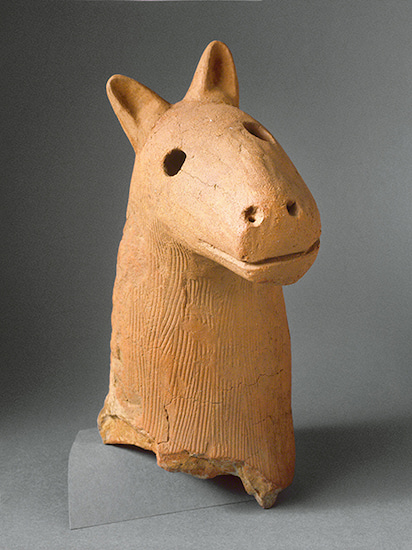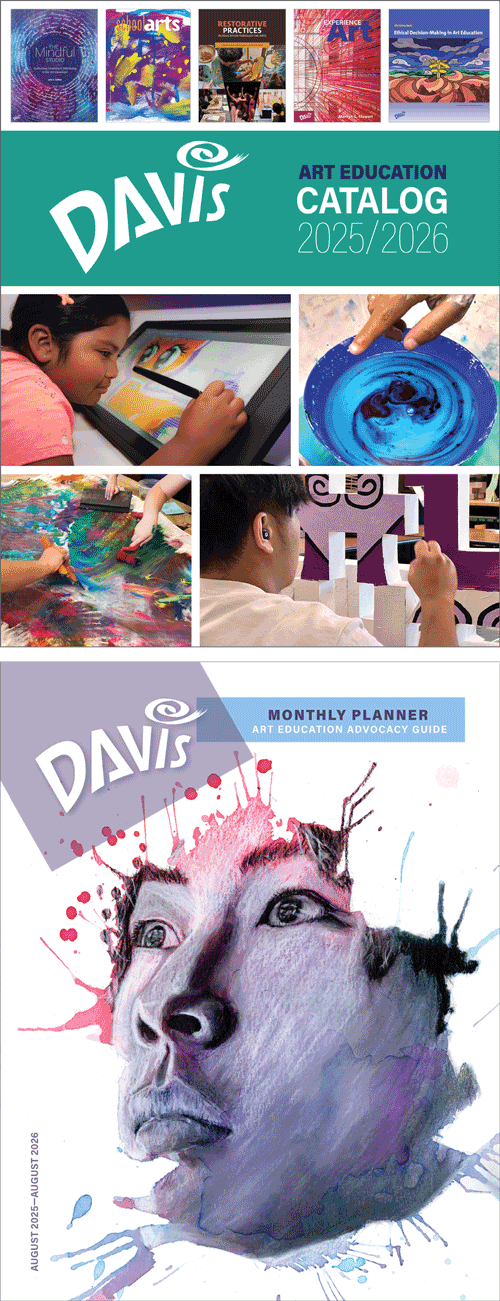August Is National Dog Month: Kofun Period
I am not a “cat person” at all, but I absolutely love doggies of all sorts, big and small. I get my almost weekly dose of cuteness when I visit my sister-in-law and brother-in-law and get to see my two doggies-in-law there! I don’t think any human or creature (well, maybe except babies and bunnies) is as cute to me as Luna and Zoe are, even though I get home covered in Zoe’s red dog hair! What is a more fitting “companion” in the afterlife than a sculpture of human’s best friend from the physical world?
 |
| Japan, Kofun period (200–552 CE), Dog’s Head (fragment?), 400s–500s CE. Earthenware, 16 ⅜" x 11 5⁄16" x 9 ⅜" (41.6 x 28.7 x 23.8 cm). © 2025 Brooklyn Museum. (BMA-5083) |
One object common in late Kofun period tombs were hollow cylinders of fired ceramic called haniwa, which means “circle of clay.” These cylinders were buried in the ground with the top protruding to prevent erosion of the tomb and mark its boundary. Eventually these haniwa were decorated on the protruding end with the same figures seen on ceramic figures in the tomb. This dog head may have been a representation of a cherished pet. Like in ancient Egypt and Han dynasty (206 BCE–220 CE) China, such figures served a protective and afterlife service to make sure the deceased was surrounded by reminders of his or her life on earth.
The people who inhabit Japan migrated from mainland East Asia beginning around 14,000 BCE, then again around 300 BCE. They settled in the coastal plains, especially on the island of Honshu. The Jomon culture is the earliest culture to flourish in Japan. Pottery from this culture is dated primarily between 5000 to 200 BCE. At this time, the Japanese shifted from being hunter-gatherers to rice growers. According to tradition, it was during this period that Japan was found by the Emperor Jimmu Tenno, a descendant of the sun goddess Amaterasu, and an ancestor of the current imperial family.
The Yayoi culture flourished ca. 200 BCE to 200 CE. It saw the development of iron working, bronze casting, and wheel-thrown pottery. The warrior elite who would eventually become the samurai class also began to develop at this time. Around 405 CE, Japan changed radically by adopting Chinese culture. This was brought with migratory groups from China, and included many artistic influences from farther west in Asia.
The Japanese began to use Chinese script, and they adopted Buddhism. During the Kofun and Nara periods (ca. 200–794 CE), Japan indirectly imported Chinese ideas in relation to production techniques, institutional model, and cultural features. These came by way of Korea through traveling merchants, monks, and students who had studied in China. While recognizing China’s cultural sophistication, Japan retained independence from the mainland. It was during this time that imperial rule was established in Japan, first during the Kofun era under the Yamato clan.
The Kofun period is notable for the construction of large tombs. In the early Kofun period, these were hollows dug into small hills. Ultimately in late Kofun period, tombs were great, earth-built mounds, sometimes surrounded by moats. Such large tombs were meant for military elite and the nobility. They soon followed the Chinese example of enclosing personal objects and small ceramic figures of people, horses, and buildings in the tomb as if to maintain that the afterlife was a continuation of the good life on earth.
Correlations to Davis programs: Explorations in Art 2E Kindergarten: 8.3; Explorations in Art 2E Grade 1: 1.9, 4.9; Explorations in Art 2E Grade 5, 4.6; Explorations in Art 2E Grade 6, 2.6, 2.5; A Global Pursuit 2E: 7.6; A Personal Journey 2E: 5.6; Beginning Sculpture: p. 48; Discovering Art History 4E: p. 102; Davis Collections: Japanese Art

Comments